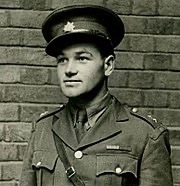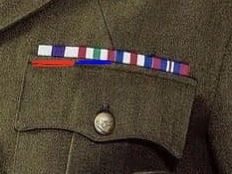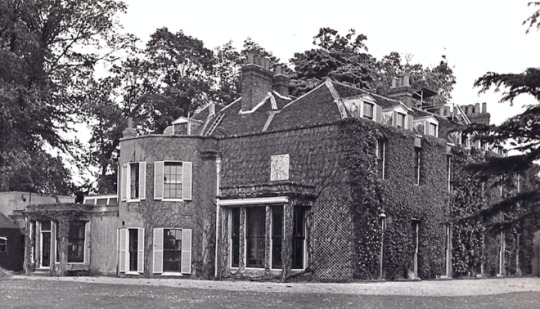#this is what? captain infodump number 57?
Explore tagged Tumblr posts
Text
Alright so I was reading the wikipedia article for the limpet mine because I am Very Normal™ about the antics my favourite characters get up to, and I went down a rabbit hole about this guy who I believe to have somewhat inspired the character of the Captain. (long post warning, TL;DR at the end)
I present to you, Cecil Vandepeer Clarke, the man who helped develop the limpet mine. (the last name Clarke might ring a bell to those who have read There’s A War Going On by Glowinggreeneyes)

Born in 1897, (which could’ve been the Captain’s birth year) he first served in WWI as a second lieutenant. He did quite a few things but the main thing that I want to focus on was his achievements. He was rewarded the Military Cross medal for his part in the battle of Vittorio Veneto in Italy in 1918. If you’ve seen my other infodump post you know that in the Captain’s pilot design, he had the Military Cross (underlined in red) and the Italy Star (underlined in blue) as medals (which later changed). Now, the Italy Star was specifically for WWII but I feel like we can excuse that because of creative licensing and all that. I just think the link between Italy is interesting. The France and Germany Star and the War Medal are part of his canon design, so which ever part of his story that relates to that must’ve made it through the cut which is 👀

Clarke married Dorothy Aileen Kendrick and had three children, which isn’t that important but my brain won’t let go of “a friend of Dorothy” so there’s that.
Clarke developed the limpet mine during WWII with his friend Stuart Macrae. They had to think of a detonation technique (remember, they had to attach the mine to the hull of the ship. You can’t have your frogmen blowing up) they found that an aniseed ball (a type of candy that resembles a gobstopper, only smaller) left by Clarke’s children in his office disintegrated at the perfect rate in water in order to detonate the mine.

While they were testing the limpet mine, they had to make sure it didn’t get damp in any way lest the aniseed ball starts dissolving. So naturally they wrapped it in a condom while not in use.
I initially made this post because the thought of the Captain being all flustered next to Havers while handling a detonator wrapped in a condom was sending me into hysterics but uhhh I got a bit carried away.
The Captain mentions that the limpet mine used suckers to attach to the side of the hull. But in reality they used magnets to attach them to the ship, which was the idea from the start. So tbh I have no idea what he’s going on about.
Now here’s something interesting; Clarke worked on improvements with the limpet mine in a country house called Aston House, which was acquired by the Secret Intelligence Service (SIS) in 1939. The mine was being manufactured by the Special Operations Executive (SOE) and the house was handed over to them by the SIS where it was known as Station XII (hm, oddly close to Button House XI don’t you think?) Clarke also developed many other weapons at the house. Aston House is in Stevenage, Hertfordshire which means literally nothing to me but it might mean something to someone else.

While developing the limpet mine Clarke had come up with the idea of an underground tank (which sounds cool as hell) and proposed his idea twice, the first time to the Ministry of Supply (which was rejected) and the second time directly to Churchill himself (who essentially said “that’s great, but we’re making one of those already”). Although he was put in charge of the “trenching machine” as he was made assistant director in the Naval Land Section, he grew to hate his job and was called for military service shortly after he left. (Hm, who else absolutely despises the navy? Perhaps our favourite little army man?)
Clarke was later promoted to captain (but acted as a major) and was stationed at Brickendonbury Manor (Station XVII) where he trained SOE agents. There he suffered a bone fracture due to a rough landing during parachute training. The wiki article doesn’t mention where the fracture was but if it was in his knees I might punch a wall.
Clarke was released from the army in November of 1945. He returned to Bedford where he joined the Territorial Army as a captain and served there for six years before being transferred to the Intelligence Corps. Later he ran as like a counsellor or something and was part of the Labour/Liberal Party, but I don’t think that’s very relevant. He retired as a major at the age of 60 and died in 1961. The wiki article doesn’t mention a cause of death (which is just poetic irony at this point) but it does mention that he had a non fatal heart attack. But non fatal means he didn’t die from it so ?????
TL;DR:
- Possibly same birth year?
- Similar(ish) medals
- Developed the limpet mine with a close friend
- Stationed at a country house (twice in the case of Clarke) during WWII
- Hate the navy (though that seems to be common amongst soldiers)
- Fucked up bones
- Worked in intelligence and weapons development
- Prominently known as a captain
- Died under mysterious circumstances apparently
I am leaving out A LOT of other information so there might be more connections that I’m missing. If you wanna learn more about Clarke and the limpet mine I found this article which delves further into the development and it was a very fun read.
I… I need to lie down
#mr. willbond I am shaking your hand#like there HAS to be SOME sort of inspiration because if not then this is a horrifying coincidence#I hope the captain also has a silly nickname like ‘nobby’#anyways this took me one late night rabbit hole and three and half hours to make sooooo….#I am so normal about this show#this is what? captain infodump number 57?#bbc ghosts#the captain#bbc ghosts captain#the captain bbc ghosts#oh yeah I’m pulling out all the captain tags for this#long post#tawgo
123 notes
·
View notes